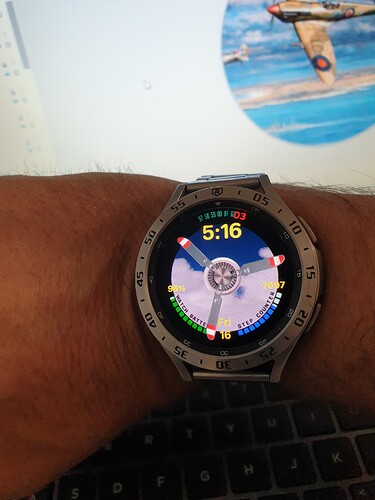Swith from Dim Display and back to see full effects -
A bit too nervous for me…but cool.
I’ve noticed that such things may run differently on the watch itself - so let me know, once launched, to test for you and give you feedback…
You could also consider slowing the propeller down after a while. I have a watch face with a quick spin-up upon wake and then a slow down. The code is:
(252.5+(interpAccel(#DWE#,0,1,5)*240)+(interpDecel(#DWE#,1,7,5)*240)+#DWE#*3)
Thank you very much for that @tom.vannes ![]()
I’ll check out your Formula a little later, when I get my laptop out next, but can tell me please: what numbers govern the slowed down speed, like if I wanted it a little faster at the end, or slower?
Just tested mine quickly and it looks pretty cool ![]()
The formula has 4 bits, a starting position and 3 speeds:
252.5
initial rotation position of the wheel where I what it to be at wake up, I wanted a spoke to be at the top.
interpAccel(#DWE#,0,1,5)*240
Acceleration speed. Speed up at wakeup from DWE value 0-1 with a factor of 5, I multiply by 240 to go faster.
interpDecel(#DWE#,1,7,5)*240
Deceleration speed. Slow down at same speed when DWE=1, but a little longer, up to 7, so right after the acceleration.
#DWE#*3
This is the final speed at which the wheel rotates - fairly slow. It is so slow it does not impact the other 2 speeds.
I add it all together to give the final result. You have to play with the numbers to get the result you want.
You could of course use 3 wheels/propellers each with their own rotation and define the opacity:
propeller 1: acceleration formula, opacity: DWE>0 && DWE<=1
propeller 2: deceleration formula, opacity: DWE>1 && DWE <=7
propeller 3: what ever speed, opacity: DWE>7
Thanks, I’m on my phone now, but I’ll definitely be playing around with that later ![]()
![]()
![]()
